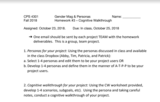
An example homework that runs students on the personas and how to use them in the GenderMag Walkthrough.
- Subject:
- Applied Science
- Computer Science
- Engineering
- Material Type:
- Homework/Assignment
- Author:
- Margaret Burnett
- Date Added:
- 11/24/2021

An example homework that runs students on the personas and how to use them in the GenderMag Walkthrough.
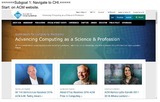
Activity where the class will perform a GenderMag walkthrough on the ACM website from the GenderMag persona’s perspective.
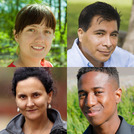
Heuristic evaluation peer activity using GenderMag Cognitive Style Heuristics.

Students mark on the continuum where they think their persona's cognitive styles are likely to fall.
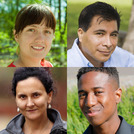
What are your facet values when using software? What's one situation when your facet values might change? How did identifying your facet values affect your understanding of how you use software?
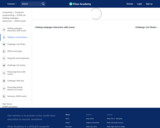
An overview of Adding an event listener
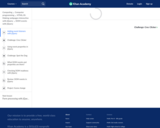
Learn how to add event listeners in jQuery so that your JavaScript can respond to events on the page, like when a user clicks a button or drags an image.

The course aims at providing the fundamental tools for effective C++ programming in the context of high-performance computing. The tools include generic programming techniques, API development, and specific C++-11/14/17 constructs. Starting from a basic knowledge of C++, the attendees should be able to start using C++ language to engineer durable abstractions to develop and optimize applications. Example usage of modern C++ concepts and features are taken from scientific applications used by the HPC community, giving the attendees the opportunity to see the presented tools in action in real world cases. Exercises are provided from a GitHub repository. This material is meant to reflect the current state of the current C++ standard. As the standard changes, some aspects of this course may become outdated.This course is an integral part of the ESiWACE-2 project, and we acknowledge the partial funding from that project. The contact person is william.sawyer@cscs.ch.
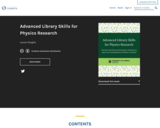
Long Description:
Hosted by:
Word Count: 8074
Included H5P activities: 8
ISBN: 978-1-55195-451-6
(Note: This resource's metadata has been created automatically by reformatting and/or combining the information that the author initially provided as part of a bulk import process.)
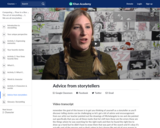
Some advice from our storytellers.
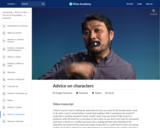
More advice to new writers.
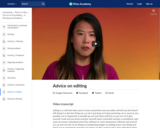
Advice on editing.
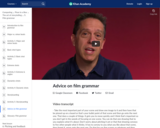
Advice for storytellers.
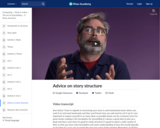
Advice from storytellers on structure.
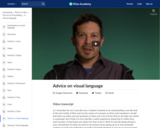
Advice from our storytellers.
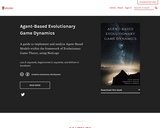
This book is a guide to implement simple agent-based evolutionary models using NetLogo.
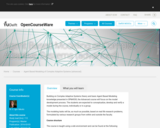
Building on Complex Adaptive Systems theory and basic Agent Based Modeling knowledge presented in SPM4530, the Advanced course will focus on the model development process. The students are expected to conceptualize, develop and verify a model during the course, individually or in a group. The modeling tasks will be, as much as possible, based on real life research problems, formulated by various research groups from within and outside the faculty.
Study Goals The main goal of the course is to learn how to form a modeling question, perform a system decomposition, conceptualize and formalize the system elements, implement and verify the simulation and validate an Agent Based Model of a socio-technical system.
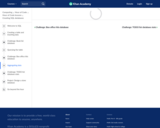
How to combine data from a database using SQL.
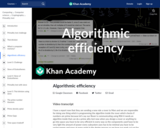
How can we improve the speed of a (deterministic) primality test? Created by Brit Cruise.
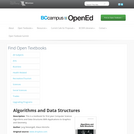
This is a textbook for first year Computer Science. Algorithms and Data Structures With Applications to Graphics and Geometry.
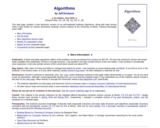
This web page contains a free electronic version of my self-published textbook Algorithms, along with other lecture notes I have written for various theoretical computer science classes at the University of Illinois, Urbana-Champaign

This course is offered to undergraduates and addresses several algorithmic challenges in computational biology. The principles of algorithmic design for biological datasets are studied and existing algorithms analyzed for application to real datasets. Topics covered include: biological sequence analysis, gene identification, regulatory motif discovery, genome assembly, genome duplication and rearrangements, evolutionary theory, clustering algorithms, and scale-free networks.
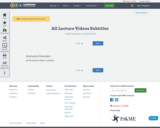
All the lecture videos' subtitles
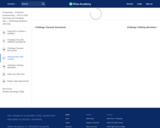
An overview of altering tables after creation
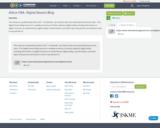
This resource is published by Altice USA. The Digital Smarts Blog resource is a weekly summary of articles related to digital safety including information on digital resources on media literacy, digital safety, misinformation, and other topics that parents and teachers need to stay abreast of.

This resource is a Hands-On course to teach Apps Development to students who may not have any programming knowledge. This course has no pre-requisites. It’s time to add the 4th R – Reading, wRiting, aRithmetic and algoRithmic thinking. In a world where the majority of new jobs require science, technology and math skills, it is time our Liberal Arts majors get IT (Information Technology)! While employers recognize and value the importance of liberal education and the liberal arts, they also want liberal arts graduates who are not digitally challenged. Many employers report a “skills gap” as they have trouble finding recent graduates qualified with ample digital skills to fill various positions. Meanwhile, a national educational movement in computer coding instruction is growing at lightning speeds in schools across the US and many consider coding more like a basic life skill (which might someday lead to a great job) rather than an extracurricular activity. App Inventor (AI) serves to narrow this skills gap and increase the versatility of students to become active creators of technology and “digitally” ready for the workplace rather than just being passive consumers of technology. Sales of hand-held devices (smartphones, tablets and phablets) are exploding. These on-line, social, and increasingly mobile computing devices are ubiquitous and offer visual, tactile and personal experiences as never before. Mobile devices in our education landscape are digital and portable - with multimedia capabilities to access the Internet, and are drastically changing the ways we teach and learn. Developing applications for such devices enables digital natives to experience mobile technology as active creators rather than just passive consumers of technology.
Learning Goals
Learn Apps Development
Learn Digital Skills (essential for a Liberal Arts major)
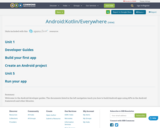
Welcome to the Android developer guides. The documents listed in the left navigation teach you how to build Android apps using APIs in the Android framework and other libraries.
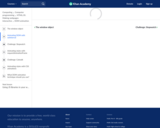
An overview of Animating DOM with setInterval

Learn how to use jQuery to animate elements in custom ways, like animating their sizes, borders, and spacing, to whatever values you specify.
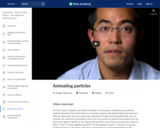
Now we'll pull everything together and explore how we calculate the position of a particle over time (frame by frame).
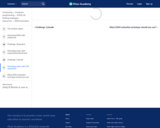
An overview of Animating styles with CSS animations
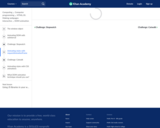
An overview of Animating styles with requestAnimationFrame

Learn how to use jQuery to show, hide, and toggle elements with animation effects.

I wanted to make a realistic animatronic heart, and as I was developing the 3D printed mechanism I used a sock to try and get a vague idea of how the silicone skin would move once the design was finished. Since the silicone casting turned out to be quite challenging and very expensive, the sock test gave me the idea to instead use a slightly elastic fabric to make a plush heart design, which could be fitted over the 3D printed mechanism.
This project is very simple on the 3D printing/assembly/electronics side, but I'd recommend you have a little sewing experience because, as a sewing amateur, I'm not 100% confident in my patterns. A sewing machine is not necessarily required and a lot of the sewing is by hand anyway, but it would certainly be useful!
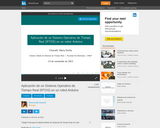
Trabajo Final para la cátedra Diseño de Sistemas de Tiempo Real. En este trabajo se muestra desde cómo armar el robot con las piezas compradas hasta cómo modificar y adaptar RTuinOS (un SO de Tiempo Real) para que funcione en nuestro Arduino.
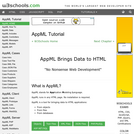
AppML stands for Application Modeling Language.
AppML runs in any HTML page. No installation is required.
AppML is a tool for bringing data to HTML applications:
From objects
From files
From databases

Short Description:
The current edition of the book may be downloaded from the Applied Bioinformatics site. Traffic analytics interactive report
Word Count: 45304
(Note: This resource's metadata has been created automatically by reformatting and/or combining the information that the author initially provided as part of a bulk import process.)
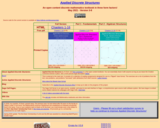
Best open source book in Discrete Math. Covers all the subjects in a standard Discrete Math class for mathematics or computer science students and contains sage cells for all subjects. Set Theory, Combinatorics, Logic, Relations, Recursion, Graph Theory, Trees, Algebraic Structures, Boolean Algebras, Automata, etc. Originally published commercially, its original text was peer-reviewed and was adopted for use at several universities throughout the country. Now in its open source version, has the same quality but it is free.
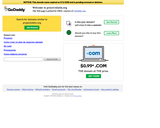
Este libro está dirigido, principalmente, a Estudiantes y Docentes que quieren aprender a programar como forma de fortalecer sus capacidades cognoscitivas y así obtener un beneficio adicional de su computador para lograr un mejor provecho de sus estudios. Dada la orientación del libro respecto a programar para resolver problemas asociados a las Ciencias e Ingenierías, el requisito mínimo de matemáticas que hemos elegido para presentar el contenido del mismo se cubre, normalmente, en el tercer año del bachillerato. No obstante, el requisito no es obligatorio para leer el libro en su totalidad y adquirir los conocimientos de programación obviando el contenido matemático.

Cerner les concepts et technologies standards des SOA ;Opérer un découpage fonctionnel des applications ;Indiquer l’accostage en Urbanisation et SOA ;Distinguer les méthodes d’analyse SOA ;Tester la mise en œuvre SOA via des outils appropriés.
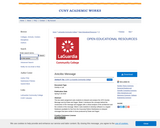
This two week assignment asks students to interpret and analyze the 1974 Arecibo Message sent by Drake and Sagan. Week 1 introduces the concepts behind the construction of the message and engages with a critical analysis of the architecture and the contents of the message. Week 2 asks students to develop software in a Jupyter Notebook (available for free from the Anaconda Python Distribution) to interpret messages that were similar to those produced by Drake and Sagan.
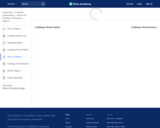
Pamela shows how to store arrays of objects - a very powerful tool for your programs.

This course introduces representations, techniques, and architectures used to build applied systems and to account for intelligence from a computational point of view. This course also explores applications of rule chaining, heuristic search, logic, constraint propagation, constrained search, and other problem-solving paradigms. In addition, it covers applications of decision trees, neural nets, SVMs and other learning paradigms.
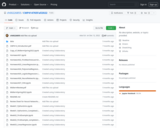
This is the GitHub repository for course CMP 414/765: Artificial Intelligence taught at The City University of New York, Lehman College, in Fall 2022

This course introduces students to the basic knowledge representation, problem solving, and learning methods of artificial intelligence. Upon completion of 6.034, students should be able to develop intelligent systems by assembling solutions to concrete computational problems; understand the role of knowledge representation, problem solving, and learning in intelligent-system engineering; and appreciate the role of problem solving, vision, and language in understanding human intelligence from a computational perspective.
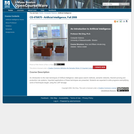
An introduction to the main techniques of Artifical Intelligence: state-space search methods, semantic networks, theorem-proving and production rule systems. Important applications of these techniques are presented. Students are expected to write programs exemplifying some of techniques taught, using the LISP lanuage.

Artificial Intelligence (AI) promises to offer tremendous opportunities for service excellence, creation of newer domain of employment avenues, and in the process augment industrial and economic growth for countries. The question, however, is India ready to embrace AI and pave for a new technology revolution? India’s history does indeed support this possibility. In the past, starting in the late 1980s, India successfully clasped the computer revolution bubble and took almost a decade to become an information technology (IT) leader in the world. Today, the Indian IT sector contributes significantly to the country’s GDP and is among the highest employment opportunity provider in the country. The journey of India as an IT major, however, has not been without its ups and downs.

What is the current state of artificial intelligence (AI) in the world of scholarly communication? What impact does AI have on the practices and strategies of publishers, libraries, information technology companies, and researchers? What exactly is AI and what are those in the realm of scholarly communication actually thinking about it and doing with it?
This Charleston Briefing seeks to provide some answers to these very important questions, offering both general essays on AI and more specific essays on AI in scholarly publishing, academic libraries, and AI in information discovery and knowledge building. The essays will help publishers, librarians, and researchers better understand the actual impact of AI on libraries and publishing so that they can respond to the potentially transformative impact of AI in a measured and knowledgeable manner.
"Charleston Briefings: Trending Topics for Information Professionals" is a thought-provoking series of brief books concerning innovation in the sphere of libraries, publishing, and technology in scholarly communication. The briefings, growing out of the vital conversations characteristic of the Charleston Conference and Against the Grain, will offer valuable insights into the trends shaping our professional lives and the institutions in which we work.

This resource is a video abstract of a research paper created by Research Square on behalf of its authors. It provides a synopsis that's easy to understand, and can be used to introduce the topics it covers to students, researchers, and the general public. The video's transcript is also provided in full, with a portion provided below for preview:
"Artificial intelligence is transforming our way of life. Able to spot patterns invisible to the human eye, algorithms are learning how to make our lives easier, safer, and more fun. That power is not lost on materials researchers. During the next decade, artificial intelligence or AI-driven research could fundamentally transform how new and better materials are developed. What’s more, it might even revamp how materials research itself is carried out, enabling promising new materials and processes to be developed more quickly. Machine learning methods come in a variety of flavors, with some requiring more guidance, or “supervision,” from researchers. But, generally, a machine-learning algorithm designed to discover and understand the behavior of materials looks for patterns connecting the composition, structure, and properties of known materials..."
The rest of the transcript, along with a link to the research itself, is available on the resource itself.

This course teaches simple reasoning techniques for complex phenomena: divide and conquer, dimensional analysis, extreme cases, continuity, scaling, successive approximation, balancing, cheap calculus, and symmetry. Applications are drawn from the physical and biological sciences, mathematics, and engineering. Examples include bird and machine flight, neuron biophysics, weather, prime numbers, and animal locomotion. Emphasis is on low-cost experiments to test ideas and on fostering curiosity about phenomena in the world.
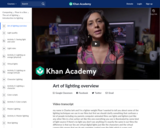
Introduction to the art of lighting.

Word Count: 3036
(Note: This resource's metadata has been created automatically by reformatting and/or combining the information that the author initially provided as part of a bulk import process.)
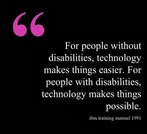
This moduled contains information about assistive technology.PROVIDE AN OVERVIEW OF THE TOPIC HERE

This hands-on workshop explores the tool Atelier that was developed to support feedback in programming tutorials. Our teaching philosophy for programming is based on a tinkering approach, that is characterised by playful exploration, driven by curiosity. Students define from the start their own assignments, given only a set of ingredients to use. The role of a teacher is to provide starting points, explain the first steps to take, and to get students unstuck when necessary. This approach puts students in a very active position but is also very feedback intensive.To support giving feedback and to reduce inconsistencies in feedback given by teaching assistants (TAs), we developed a tool, Atelier, that allows to give comments on code and share this with the respective student, and also with TAs and teachers.The hands-on activity will start with an introduction, followed by an online tutorial lecture with some simple programming assignments. Participants will take the role of students as well as TAs and use Atelier to give and receive feedback. After two rounds of programming exercises, we will evaluate the tool with the participants and discuss its use and place in programming education.

This course provides a challenging introduction to some of the central ideas of theoretical computer science. Beginning in antiquity, the course will progress through finite automata, circuits and decision trees, Turing machines and computability, efficient algorithms and reducibility, the P versus NP problem, NP-completeness, the power of randomness, cryptography and one-way functions, computational learning theory, and quantum computing. It examines the classes of problems that can and cannot be solved by various kinds of machines. It tries to explain the key differences between computational models that affect their power.
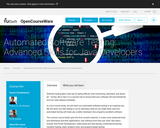
Software testing gets a bad rap for being difficult, time-consuming, redundant, and above all – boring. But in fact, it is a proven way to ensure that your software will work flawlessly and can meet release schedules.
In a two-course series, we will teach you automated software testing in an inspiring way. We will show you that testing is not as daunting a task as you might think, and how automated testing will make you a better developer who programs excellent software.
This second course builds upon the first course’s material. It covers more advanced tools and techniques and their applications, now utilizing more than just JUnit. Key topics include Test-Driven Development, state-based and web testing, combinatorial testing, mutation testing, static analysis tools, and property-based testing.
This is a highly practical course. Throughout the lessons, you will test various programs by means of different techniques. By the end, you will be able to choose the best testing strategies for different projects.
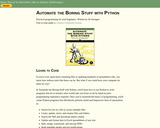
If you've ever spent hours renaming files or updating hundreds of spreadsheet cells, you know how tedious tasks like these can be. But what if you could have your computer do them for you?
In Automate the Boring Stuff with Python, you'll learn how to use Python to write programs that do in minutes what would take you hours to do by hand-no prior programming experience required. Once you've mastered the basics of programming, you'll create Python programs that effortlessly perform useful and impressive feats of automation to:
Search for text in a file or across multiple files
Create, update, move, and rename files and folders
Search the Web and download online content
Update and format data in Excel spreadsheets of any size
Split, merge, watermark, and encrypt PDFs
Send reminder emails and text notifications
Fill out online forms
Step-by-step instructions walk you through each program, and practice projects at the end of each chapter challenge you to improve those programs and use your newfound skills to automate similar tasks.
Don't spend your time doing work a well-trained monkey could do. Even if you've never written a line of code, you can make your computer do the grunt work. Learn how in Automate the Boring Stuff with Python.

6.270 is a hands-on, learn-by-doing class, in which participants design and build a robot that will play in a competition at the end of January. The goal for the students is to design a machine that will be able to navigate its way around the playing surface, recognize other opponents, and manipulate game objects. Unlike the machines in Design and Manufacturing I (2.007), 6.270 robots are totally autonomous, so once a round begins, there is no human intervention.
The goal of 6.270 is to teach students about robotic design by giving them the hardware, software, and information they need to design, build, and debug their own robot. The subject includes concepts and applications that are related to various MIT classes (e.g. 6.001, 6.002, 6.004, and 2.007), though there are no formal prerequisites for 6.270.
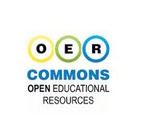
Açık Eğitim Kaynakları Profil Oluşturma
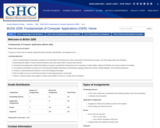
What is this course all about?
To give you a basic level of computer application literacy primarily, Spreadsheets, and database Excel
Learning objectives:
Gain an understanding of information competency, the Information Processing Cycle, Basic Components of the Personal Computer, and Technology used in the Workplace.
Demonstrate the ability to Create and Edit Workbooks and Charts which utilize Functions and Formulas.
Understand and applying the fundamental database concepts to spreadsheet development such as Importing, Creating Tables, Sorting and Filtering, and using Conditional Formatting.
Use advanced spreadsheet concepts such as Working with Multiple Worksheets and Workbooks, applying Advanced Functions, Setting Validation, and Protecting Workbooks.
Develop an understanding and exposure to new and emerging technologies
Gain the ability to serve as an informed purchaser of technology (personal, commercial)
Prepare a capstone project which applies concepts and principles of course to a unique series of problems.
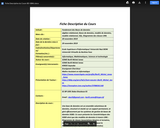
Une base de données est un ensemble volumineux de données, structuré et stocké sur un support permanent, et géré efficacement par les systèmes de gestion de bases de données SGBD. Ce cours présente les Caractéristiques des SGBD ainsi que des modèles de données à travers UML : Diagramme de classes (associations binaires et ternaires, réflexives, classes-association). Il aborde aussi la Normalisation (les 3 premières formes normales). Traduction du diagramme des classes en tables dans le respect des formes normales. la mise en œuvre se fera à travers le langage normalisé Structured Query Language (SQL).
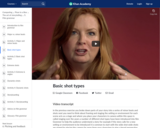
Overview of basic shot types.

This course is conducted as an artificial intelligence programming contest in Java. Students work in teams to program virtual robots to play Battlecode, a real-time strategy game. Optional lectures are provided on topics and programming practices relevant to the game, and students learn and improve their programming skills experientially. The competition culminates in a live Battlecode tournament.
This course is offered during the Independent Activities Period (IAP), which is a special 4-week term at MIT that runs from the first week of January until the end of the month.

Short Description:
This textbook was written for a community college introductory course in spreadsheets utilizing Microsoft Excel. While the figures shown utilize Excel 2016, the textbook was written to be applicable to other versions of Excel as well. The book introduces new users to the basics of spreadsheets and is appropriate for students in any major who have not used Excel before.
Long Description:
This Beginning Excel textbook is intended for use in a one-term introductory spreadsheet course for all majors taught at two-year colleges. The basics of Excel, as they apply to the professional workplace, are introduced, including spreadsheet design, data entry, formulas, functions, charts, tables, and multi-sheet use.
Contact Diane Shingledecker (dshingle@pcc.edu) for inquiries about accompanying online quizzes, tests, What’s Wrong with this Spreadsheet critical thinking exercises, midterm, and final projects that currently reside in a Desire2Learn online course shell.
Word Count: 62914
ISBN: 978-1-990641-72-5
(Note: This resource's metadata has been created automatically by reformatting and/or combining the information that the author initially provided as part of a bulk import process.)
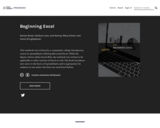
This textbook was written for a community college introductory course in spreadsheets utilizing Microsoft Excel. While the figures shown utilize Excel 2016, the textbook was written to be applicable to other versions of Excel as well. The book introduces new users to the basics of spreadsheets and is appropriate for students in any major who have not used Excel before.

Second Edition: https://openoregon.pressbooks.pub/beginningexcel19/
Short Description:
This is the first edition of a textbook written for a community college introductory course in spreadsheets utilizing Microsoft Excel; second edition available: https://openoregon.pressbooks.pub/beginningexcel19/. While the figures shown utilize Excel 2016, the textbook was written to be applicable to other versions of Excel as well. The book introduces new users to the basics of spreadsheets and is appropriate for students in any major who have not used Excel before. Order a print copy: http://www.lulu.com/shop/noreen-brown-and-barbara-lave-and-julie-romey-and-mary-schatz/beginning-excel/paperback/product-23853995.html
Long Description:
Second edition available: https://openoregon.pressbooks.pub/beginningexcel19/
This Beginning Excel textbook is intended for use in a one-term introductory spreadsheet course for all majors taught at two-year colleges. The basics of Excel, as they apply to the professional workplace, are introduced, including spreadsheet design, data entry, formulas, functions, charts, tables, and multi-sheet use.
Order a print copy: http://www.lulu.com/shop/noreen-brown-and-barbara-lave-and-julie-romey-and-mary-schatz/beginning-excel/paperback/product-23853995.html
Word Count: 62914
ISBN: 978-1-63635-034-9
(Note: This resource's metadata has been created automatically by reformatting and/or combining the information that the author initially provided as part of a bulk import process.)

This book is NOT about assembly language programming. There is assembly language sprinkled throughout the book, so you will in fact learn assembly language—but only as a means to a different end, the latter being understanding of computer systems. Specifically, you will learn about high-level hardware, the large differences between one machine and the next, and low-level software, meaning operating systems and to some degree compilers.

Proceedings of the 2022 Erasmus Staff Training Week at ULiège Library
Short Description:
No library can buy or hold everything its patrons need. At a certain point, librarians need to pool their resources and collaborate to provide access to what they don't have: Collaboration, interlibrary loan, purchase on demand, PDA and EBA are notably key to success.
Long Description:
No library can buy or hold everything its patrons need. At a certain point, librarians need to pool their resources and collaborate to provide access to what they don’t have: Collaboration and partnership, centralized and shared collection storage, digitization projects, interlibrary loan and resource sharing, purchase on demand, PDA and EBA are notably key to success.
The 2022 edition of the Erasmus Mobility Staff Training week organized at the University of Liège Library focused on services, projects and policies that libraries can deploy and promote to increase and ease access to materials that do not belong to their print or electronic holdings.
More than 20 librarians, managers, and researchers in library science share their experiences and visions in this book.
Word Count: 63148
ISBN: 978-2-87019-313-6 (online); 978-2-87019-314-3 (pdf); 978-2-87019-315-0 (epub)
(Note: This resource's metadata has been created automatically by reformatting and/or combining the information that the author initially provided as part of a bulk import process.)
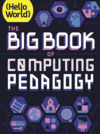
This special edition focuses on practical approaches to teaching computing in the classroom, and includes some of our favourite pedagogically themed articles from previous issues of Hello World, as well as a few never-seen-before pieces. It is structured around twelve pedagogical principles, first developed by us as part of our work related to the National Centre for Computing Education in England. These twelve principles are based on up-to-date research around the best ways of approaching the teaching and learning of computing.
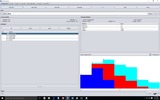
The IOT services are for customer convenience, control in online booking IOT services such as radio station, smart coffee makers, dim lights and energy programmed lights. Our System will able to recommend the valid customer opinion by analyzing UAE, UK and Oman hotel aspects like services, value, cleanliness and location from customers’ reviews. it include the Big Analytics, Hadoop, HDFS, Sentiment Analytics, Emotion Analytics, ANOVA in Map-Reduce.
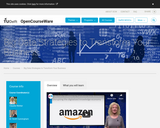
While big data infiltrates all walks of life, most firms have not changed sufficiently to meet the challenges that come with it. In this course, you will learn how to develop a big data strategy, transform your business model and your organization.
This course will enable professionals to take their organization and their own career to the next level, regardless of their background and position.
Professionals will learn how to be in charge of big data instead of being subject to it. In particular, they will become familiar with tools to:
assess their current situation regarding potential big data-induced changes of a disruptive nature,
identify their options for successfully integrating big data in their strategy, business model and organization, or if not possible, how to exit quickly with as little loss as possible, and
strengthen their own position and that of their organization in our digitalized knowledge economy
The course will build on the concepts of product life cycles, the business model canvas, organizational theory and digitalized management jobs (such as Chief Digital Officer or Chief Informatics Officer) to help you find the best way to deal with and benefit from big data induced changes.
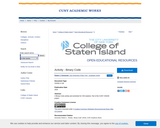
A Binary Code activity and worksheet for CS0 students. Part of the CUNY CS04All project.
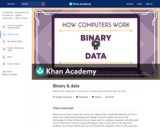
Adafruit founder Limor Fried and program manager Federico Gomez Suarez explain how computers represent numbers, text, images, and sound using tiny electric signals.
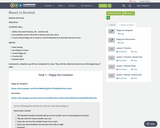
ObjectivesSTUDENTS WILL:Define the words binary, bit, and bit rateSuccessfully convert decimal to binary and vise versaCreate binary flippy do to assist in converting binary to decimal and vice versaAgendaNote takingVocabulary reviewCreate flippy doPractice WSReview sheetHomework: complete any WS not completed in class. They will be collected tomorrow at the beginning of class

This course includes basic theory and examples

This interdisciplinary course provides a hands-on approach to students in the topics of bioinformatics and proteomics. Lectures and labs cover sequence analysis, microarray expression analysis, Bayesian methods, control theory, scale-free networks, and biotechnology applications. Designed for those with a computational and/or engineering background, it will include current real-world examples, actual implementations, and engineering design issues. Where applicable, engineering issues from signal processing, network theory, machine learning, robotics and other domains will be expounded upon.

In this course problems from biological engineering are used to develop structured computer programming skills and explore the theory and practice of complex systems design and construction.
The official course Web site can be viewed at: BE.180 Biological Engineering Programming.
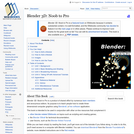
Blender 3D: Noob to Pro is a product of shared effort by numerous team members and anonymous editors. Its purpose is to teach people how to create three-dimensional computer graphics using Blender, a free software application. This book is intended to be used in conjunction with other on-line resources that complement it.

Blueprints is a concise yet comprehensive coverage of Object-Oriented Analysis and Design concepts, suitable for a second programming course in Computer Science. It introduces and teaches application development in a command-line environment, and assumes basic expertise with the Java programming language.

One way we can prove that we are calculating the actual touching point.

Short Description:
This toolkit is designed to inform the academic librarian about book clubs hosted in an academic library. The toolkit guides academic librarians through building meaningful and effective book clubs at their institutions through an overview of extant literature, the results of a cross-institutional survey, a case-study, and through a series of best practices. It provides the academic librarian with language about the vision and value of such a program.
Word Count: 10732
(Note: This resource's metadata has been created automatically by reformatting and/or combining the information that the author initially provided as part of a bulk import process.)

Jessica introduces the idea of "booleans", values that can either be true or false.
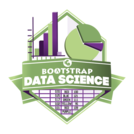
In Bootstrap:Data Science, students form their own questions about the world around them, analyze data using multiple methods, and write a research paper about their findings. The module covers functions, looping and iteration, data visualization, linear regression, and more. Social studies, science, and business teachers can utilize this module to help students make inferences from data. Math teachers can use this module to introduce foundational concepts in statistics, and it is aligned to state and national standards.
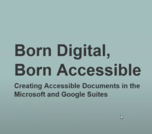
Michael Cantino from Northwest Regional Education Service District presents Creating Accessible Documents in the Microsoft and Google Suites.

Exploring Scholarly Reading through Publisher, Librarian, and Reader Perspectives
Short Description:
In 2017, The Rebus Foundation embarked on a research and development project to prototype an open, web-based reading system, with funding from the Andrew W. Mellon Foundation. Our main goals with this project were to clearly identify and understand the different players involved in the publication, distribution and consumption of scholarly monographs, and to explore how Open Web technologies could improve scholars’ access to, and interaction with, scholarly monographs. We've summarized our research findings in this report. Visit rebus.foundation to learn more about the Rebus Foundation and our projects. You can also contact us at hi@rebus.foundation.
Word Count: 16501
(Note: This resource's metadata has been created automatically by reformatting and/or combining the information that the author initially provided as part of a bulk import process.)
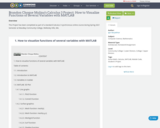
This Project has been completed as part of a standard Calculus 3 synchronous online course during Spring 2021 Semester at MassBay Community College, Wellesley Hills, MA.
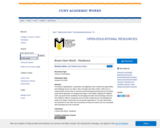
The trifecta of globalization, urbanization and digitization have created new opportunities and challenges across our nation, cities, boroughs and urban centers. Cities are in a unique position at the center of commerce and technology becoming hubs for innovation and practical application of emerging technology. In this rapidly changing 24/7 digitized world, city governments worldwide are leveraging innovation and technology to become more effective, efficient, transparent and to be able to better plan for and anticipate the needs of its citizens, businesses and community organizations. This class will provide the framework for how cities and communities can become smarter and more accessible with technology and more connected.

The following is a Generative AI instructional framework that seeks to warn up-and-coming professionals, corporations, and organizations of the potential social dangers of the widespread usage of generative artificial intelligence (AI), while also providing a framework for safeguarding digital racial and gender justice at the institutional level.

Short Description:
This text introduces copyright, publishing formats, note-taking formats, citation styles, source evaluation, library organization, library resources and services, and effective search practices using online databases and Internet search engines.
Long Description:
This is a practical guide to college-level research for freshman, to prepare them for research projects in all disciplines. Topics include an introduction to copyright, publishing formats, note-taking styles, reading tips for advanced information, citation styles and source evaluation. The text leads students through the research process, from selecting a topic, locating and evaluating sources for credibility, developing a citation for each source and guidance about compiling the material using APA (7th ed.) and MLA (8th ed.) standards.
Word Count: 26259
(Note: This resource's metadata has been created automatically by reformatting and/or combining the information that the author initially provided as part of a bulk import process.)

Short Description:
This text introduces copyright, publishing formats, note-taking formats, citation styles, source evaluation, library organization, library resources and services, and effective search practices using online databases and Internet search engines.
Long Description:
This is a practical guide to college-level research for freshman, to prepare them for research projects in all disciplines. Topics include an introduction to copyright, publishing formats, note-taking styles, reading tips for advanced information, citation styles and source evaluation. The text leads students through the research process, from selecting a topic, locating and evaluating sources for credibility, developing a citation for each source and guidance about compiling the material using APA (7th ed.) and MLA (8th ed.) standards.
Word Count: 26259
(Note: This resource's metadata has been created automatically by reformatting and/or combining the information that the author initially provided as part of a bulk import process.)
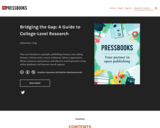
Short Description:
This text introduces copyright, publishing formats, note-taking formats, citation styles, source evaluation, library organization, library resources and services, and effective search practices using online databases and Internet search engines.
Long Description:
This is a practical guide to college-level research for freshman, to prepare them for research projects in all disciplines. Topics include an introduction to copyright, publishing formats, note-taking styles, reading tips for advanced information, citation styles and source evaluation. The text leads students through the research process, from selecting a topic, locating and evaluating sources for credibility, developing a citation for each source and guidance about compiling the material using APA (7th ed.) and MLA (8th ed.) standards.
Word Count: 24502
(Note: This resource's metadata has been created automatically by reformatting and/or combining the information that the author initially provided as part of a bulk import process.)
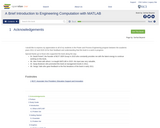
A Brief Introduction to Engineering Computation with MATLAB is specifically designed for students with no programming experience. However, students are expected to be proficient in First Year Mathematics and Sciences and access to good reference books are highly recommended. Students are assumed to have a working knowledge of the Mac OS X or Microsoft Windows operating systems. The strategic goal of the course and book is to provide learners with an appreciation for the role computation plays in solving engineering problems. MATLAB specific skills that students are expected to be proficient at are: write scripts to solve engineering problems including interpolation, numerical integration and regression analysis, plot graphs to visualize, analyze and present numerical data, and publish reports.

Principles and foundations for the digital era
Short Description:
The book goes beyond the surface to explain why AECO digitization matters with respect to information. It presents information in the framework of representation, introduces a semantic typology of data and connects process to information management, towards a coherent and transparent theory of building information for the digital era.
Long Description:
Digitization in AECO is in a transitional phase. On one hand, technologies like BIM finally introduce symbolic representation and, on the other, there is an unhealthy and unproductive attachment to outdated, analogue practices and documents. The book goes beyond the surface to explain why digitization matters with respect to information. It presents information in the framework of representation, introduces a semantic typology of data and connects process to information management, towards a coherent and transparent theory of building information for the digital era.
Word Count: 56989
(Note: This resource's metadata has been created automatically by reformatting and/or combining the information that the author initially provided as part of a bulk import process.)

This course will serve as a two-week aggressively gentle introduction to programming for those students who lack background in the field. Specifically targeted at students with little or no programming experience, the course seeks to reach students who intend to take 6.001 and feel they would struggle because they lack the necessary background. The main focus of the subject will be acquiring programming experience: instruction in programming fundamentals coupled with lots of practice problems. Lots of programming required, but lots of support provided.
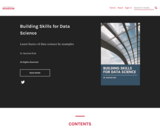
This book provides students with an introduction to the skills needed to succeed in Data Science.

Fundamentals and principles
Short Description:
The book presents a coherent theory of building information, focusing on its representation and management in the digital era. It addresses issues such as the information explosion and the structure of analogue building representations to propose a parsimonious approach to the deployment and utilization of symbolic digital technologies like BIM.
Word Count: 27171
(Note: This resource's metadata has been created automatically by reformatting and/or combining the information that the author initially provided as part of a bulk import process.)

Business communication also happens across channels. We have come a long way as the human race in terms of the channels we use to communicate with each other. With the development of language, much of communication was oral, with humans passing knowledge and information to other humans through the mouth. Sometimes we would use actions, whether through body language or through the use of other methods, such as smoke signals. However, most of communication was restricted to oral communication. With the invention of writing, we had yet another channel of communication, which turned out to be a little more permanent than speech. Information could now be recorded for posterity and knowledge could be passed down from father to son without the loss of accuracy.

Short Description:
This book introduces students to Microsoft Windows, Word, Excel, PowerPoint and email management. The text covers basic concepts of creating word processing, spreadsheets, and presentation materials for the workplace.
Long Description:
This book introduces students to Microsoft Windows, Word, Excel, PowerPoint and email management. The text covers basic concepts of creating word processing, spreadsheets, and presentation materials for the workplace.
Word Count: 42639
ISBN: 978-1-990641-46-6
(Note: This resource's metadata has been created automatically by reformatting and/or combining the information that the author initially provided as part of a bulk import process.)

Short Description:
This book introduces students to Microsoft Windows, Word, Excel, PowerPoint and email management. The text covers basic concepts of creating word processing, spreadsheets, and presentation materials for the workplace.
Long Description:
This book introduces students to Microsoft Windows, Word, Excel, PowerPoint and email management. The text covers basic concepts of creating word processing, spreadsheets, and presentation materials for the workplace.
Word Count: 68829
(Note: This resource's metadata has been created automatically by reformatting and/or combining the information that the author initially provided as part of a bulk import process.)

Short Description:
Intro to Computer Applications or Business Computers for Office 365
Word Count: 40014
(Note: This resource's metadata has been created automatically by reformatting and/or combining the information that the author initially provided as part of a bulk import process.)